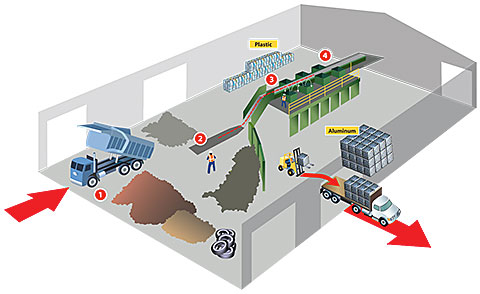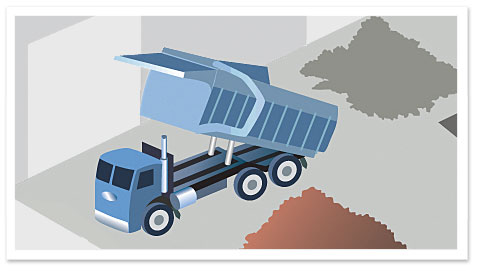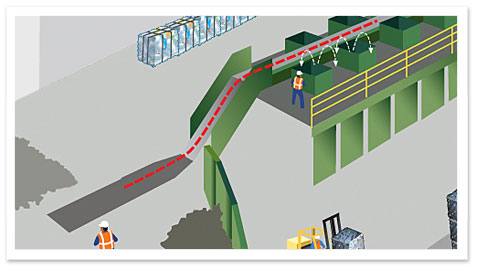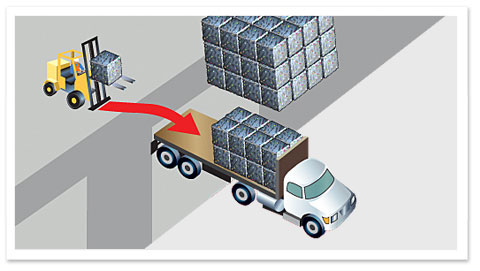Residential Wastes
After completing assigned routes, TTSD trucks arrive at the facility entrance. Each truck is weighed at our certified scale to determine the amount of material collected and its source, or area. After weighing, trucks dump their loads onto a tipping floor to begin processing. A front-end loader pushes the material into a sort pile, where ground crews remove bulky items (e.g. appliances, oversized wood) and an excavator feathers material onto a large, rotating belt. The belt lifts the material to an elevated platform and continues past a series of sorting stations. Each station is assigned a specific recyclable item (e.g. paper, cardboard, aluminum cans, glass bottles). Workers remove the designated materials and drop them down a chute into individual holding bays. Unsorted items remain on the belt and pass through a portal into the transfer station where they are fed across a fines shaker and dropped onto the floor to await removal to the waste transfer truck. When the MRF bays containing recyclable materials are full, a front-end loader pushes the items onto a ground-level conveyor belt. Workers conduct a final check for contaminated items before running the conveyor into a large bailer. Bails of recyclable material are stored until there is enough material to fill a truck shipment. Truckloads of each material are then sent to recyclers throughout California and Asia.
Residual Garbage
After the sorting process for recyclable materials is complete for both residential and commercial garbage, the final residual material is top-loaded into “possum belly” transfer trucks and hauled to a landfill. With the hard work and effort from everyone at Eastern Regional Landfill, the facility boasts a over 50% diversion rate. Our primary goal is to keep as much recyclable and reusable material out of the landfill as possible.





